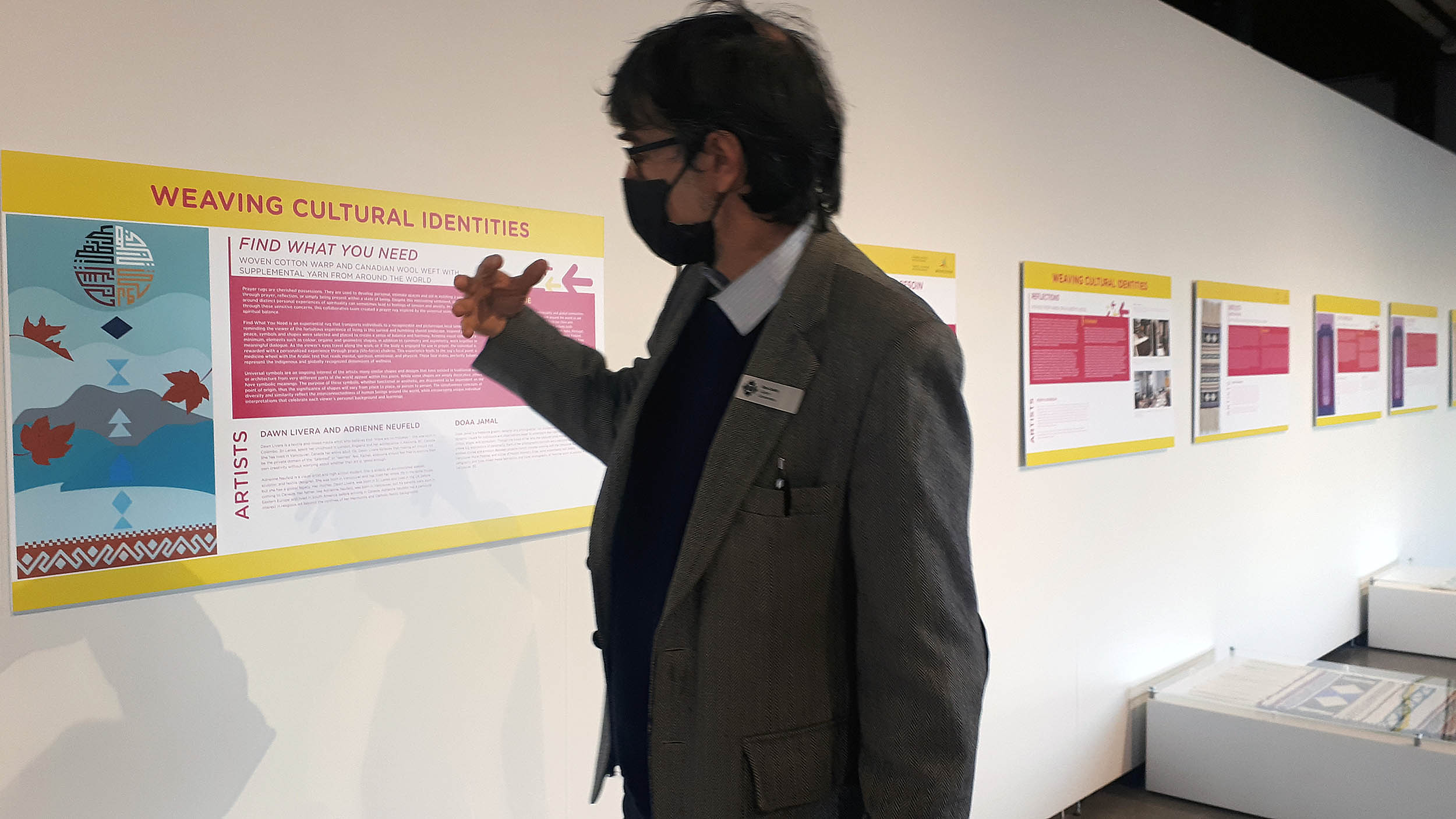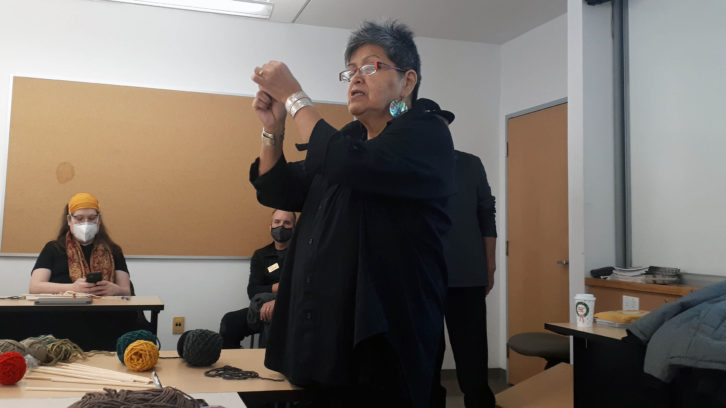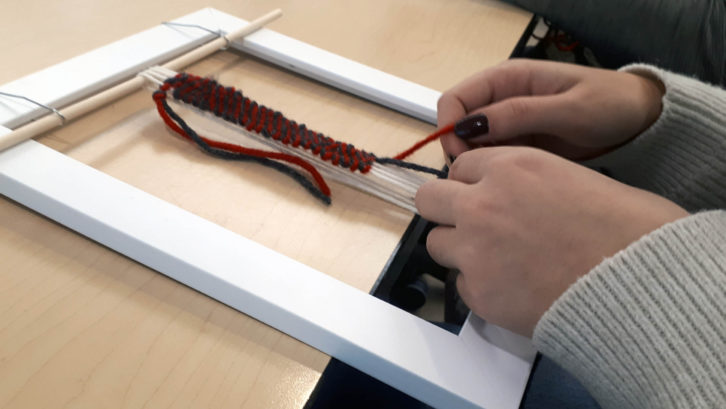Connections between Indigenous, Muslim cultures showcased at Pier 21
Prayer rugs used to highlight similarities between two cultures

caption
Pier 21 curator Dan Conlin talks about a museum favourite.Long beams of the late afternoon sun bounce off Halifax Harbour into the exhibit room and fall onto the prayer rugs lying on the floor in their display cases.
The rugs are part of the newest exhibit at The Museum of Immigration at Pier 21, Weaving Cultural Identities. The exhibit showcases the spiritual and cultural connections between Indigenous cultures and Muslim immigrants in Canada.
It sees Muslim artists starting with a digital design, while various Indigenous artists weave the design into a prayer rug. These rugs are then displayed close to the floor to represent how they would be used in everyday life.
Two artists, Chief Janice George (Chepximiya Siyam’) and her husband, Willard (Buddy) Joseph (Skwetsimeltxw), were invited to help open the exhibit and tell their story as Coast Salish weavers. They worked with Michelle Nahanee, a graphic artist, to design their prayer rug on display, titled Unbroken Prayer. Their rug represents the continuity between the past, present, and future through the prayers of their ancestors to today. Related stories
“It’s reconnecting with the past again. We talk about Janice’s friend that learned to weave that went to residential school. We tell them that they’re doing the exact same stitches that our ancestors did and you’re getting the same teaching that they lived by,” Joseph said during an interview following a workshop he and George held for an Indigenous studies class at Dalhousie University.

caption
Chief Janice George goes over how to finish weaving with a class at Dalhousie University.George and Joseph learned Salish weaving in 2003 and brought it back to their community. They said that residential schools took weaving away from their community. As a result, some of their first students were the elders of their community who had never learned to weave.
“It’s a responsibility that we took on and having done the work in the communities that we’ve done, we take on that responsibility. And it’s our contribution,” said George.
For George and Joseph, bringing back their culture and integrating it with immigrant cultures shows the resilience of their nation, along with all Indigenous nations in Canada. They want to share the story of their people and educate newcomers about the land and its importance. They said participating in this exhibit has been a powerful experience.
“So, we blended our cultures and the weavings the same way, so it’s really good too, you know, they’re highly spiritual for us and they’re highly spiritual for the Muslims,” George said. “You know, that was something that was really meaningful.”
The exhibit was first showcased in Vancouver as part of a project with the Vancouver Biennale, a local art group. That exhibit saw the development of prayer rugs and a mosque built out of chain-link fencing. The mosque isn’t on display at Pier 21, but the artists’ rugs and personal histories are displayed.

caption
A student in Chief Janice George’s workshop works to finish her weaving.“The power of culture is to bring people together and how people can work together. Art comes from the heart, and if we can work together, with the intention of working together, then we will, I don’t say we can, we will make the world better,” said George.
Pier 21 curator Dan Conlin agrees with George about the importance of collaboration and said this exhibit is showcasing it well.
He pointed out a favourite piece in the exhibit, Find What You Need, a rug woven by Dawn Livera and Adrienne Neufeld but designed by Doaa Jamal, a Yemeni graphic designer who integrated traditional Indigenous, Canadian, and Muslim iconography in her design.
“The idea of collaboration is making things larger together,” Conlin said during an interview in the exhibit last Friday.
Conlin views this exhibit as highlighting the intersections between Indigenous and Muslim experiences and cultures and an opportunity for Canada’s west and east coast cultures to merge. Conlin said that Pier 21 invited Mi’kmaw representatives to participate in the exhibit opening because of their rich weaving culture.
The big thing Conlin, George and Joseph hope people take away from the exhibit is engaging with different perspectives and teachings and how they can connect us to each other.
“The work that we do is to share, but it’s to inspire people too. Inspiration to work with other people or work with Indigenous people and understand Indigenous teachings,” George said.
The exhibit runs at Pier 21 until the end of January.
About the author
Angela Capobianco
Angela Capobianco (she/her) is a Halifax-born journalist. She has a Master's degree in history from Queen's University and hopes to use her skills...
